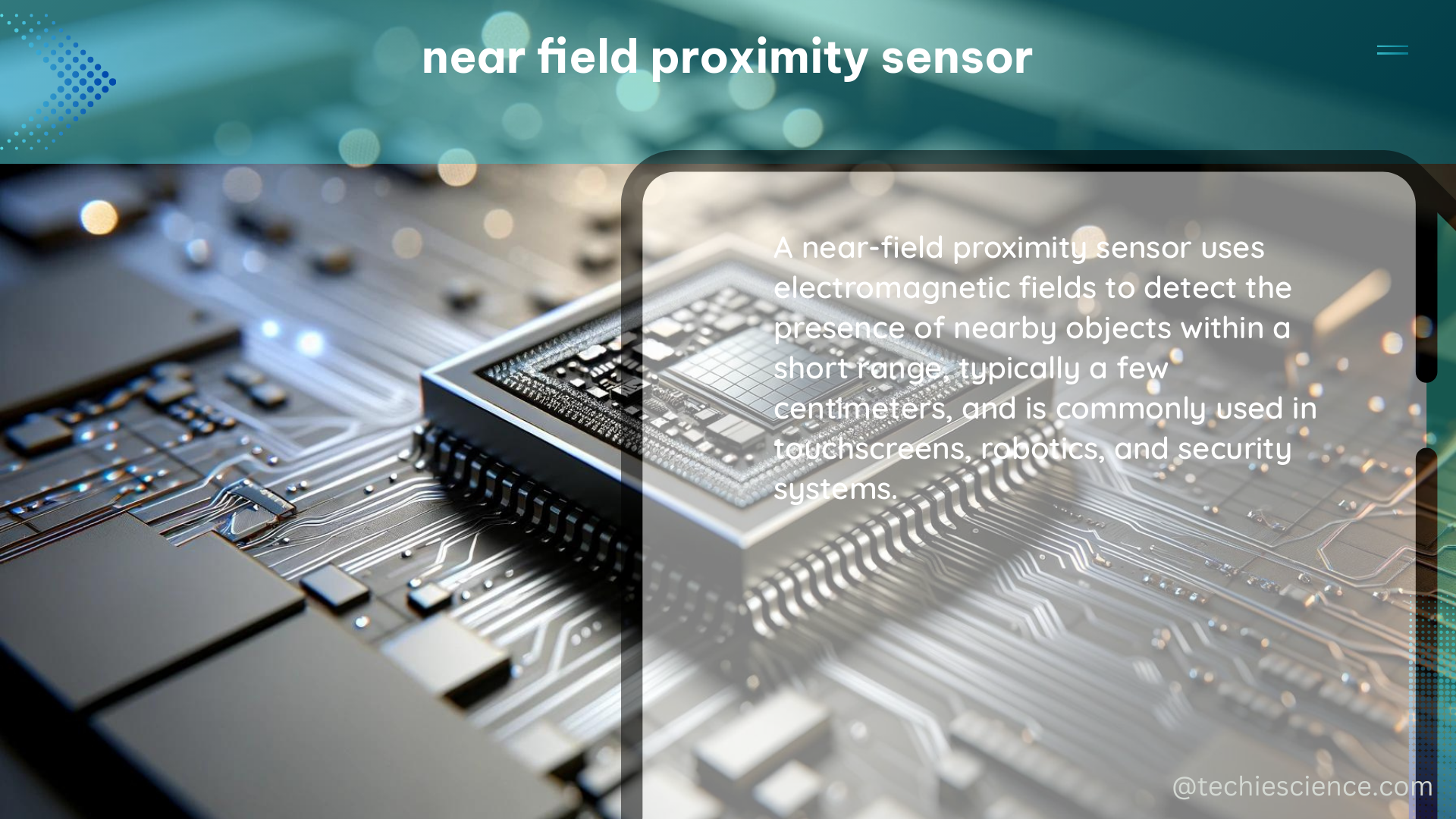Near field proximity sensors are a class of devices that excel at detecting the presence of objects within a short range, typically up to a few centimeters. These sensors have become increasingly prevalent in a wide range of applications, from automotive safety systems and industrial automation to wearable technology and beyond. In this comprehensive guide, we’ll delve into the technical specifications, working principles, and practical applications of various types of near field proximity sensors, equipping you with the knowledge to harness their full potential.
Infrared Proximity Sensors: Harnessing the Power of Light
Infrared proximity sensors are a popular choice for near field detection, leveraging the properties of infrared light to sense the presence of objects. These sensors can be classified into two main categories:
-
Passive Infrared Sensors (PIR): Passive infrared sensors detect the heat signatures emitted by objects, allowing them to sense the presence of warm bodies, such as humans or animals, within their detection range. These sensors typically have a range of up to 1 meter and are commonly used in security systems, motion-activated lighting, and smart home applications.
-
Active Infrared Sensors: Active infrared sensors emit infrared light and measure the reflection to detect the presence of objects. These sensors can achieve a sensing range of up to 1 meter and are often used in automotive safety systems, such as parking sensors and blind-spot detection, as well as in industrial automation processes.
Infrared proximity sensors offer several advantages, including their compact size, low power consumption, and relatively simple integration into various systems. However, their performance can be affected by environmental factors, such as ambient light and temperature variations.
Ultrasonic Proximity Sensors: Harnessing the Power of Sound

Ultrasonic proximity sensors utilize high-frequency sound waves to detect the presence of objects. These sensors emit sound waves and measure the time it takes for the echo to return, allowing them to determine the distance to the detected object. Ultrasonic proximity sensors typically have a sensing range of up to 5 meters, making them well-suited for industrial automation applications, such as robotics, conveyor systems, and level sensing.
One of the key advantages of ultrasonic proximity sensors is their ability to operate effectively in a wide range of environmental conditions, including dusty or humid environments, where other sensor types may struggle. Additionally, ultrasonic sensors can detect a variety of materials, including metals, plastics, and liquids, making them a versatile choice for many industrial applications.
Capacitive Proximity Sensors: Harnessing the Power of Electrical Fields
Capacitive proximity sensors leverage the principle of capacitance to detect the presence of objects. These sensors measure the change in capacitance caused by the introduction of an object within their sensing range, which is typically up to 30 millimeters. Capacitive proximity sensors are commonly used in industrial automation for level sensing, positioning, and touch-based control applications.
The primary advantage of capacitive proximity sensors is their ability to detect both conductive and non-conductive materials, making them suitable for a wide range of applications. Additionally, these sensors are relatively immune to environmental factors, such as dust, moisture, and vibrations, ensuring reliable performance in challenging industrial settings.
Magnetic Proximity Sensors: Harnessing the Power of Magnetism
Magnetic proximity sensors detect the presence of magnetic objects by measuring changes in the surrounding magnetic field. These sensors can typically sense objects within a range of up to 50 millimeters and are commonly used in industrial automation for positioning, detection of rotating shafts, and other applications where the presence of a magnetic object needs to be monitored.
One of the key advantages of magnetic proximity sensors is their ability to operate reliably in harsh environments, as they are resistant to factors such as dust, moisture, and vibrations. Additionally, these sensors can be easily integrated into systems that already utilize magnetic components, making them a cost-effective solution for many industrial applications.
DIY Near Field Proximity Sensor: Unleash Your Creativity
For those seeking a more hands-on approach, building a DIY near field proximity sensor can be a rewarding and educational experience. By combining an Arduino board with an ultrasonic sensor, such as the HC-SR04, you can create a customizable near field proximity sensor with a sensing range of up to 4 meters.
The Arduino board can be programmed to perform a variety of actions based on the detected presence of objects, such as triggering an alarm, activating a motor, or controlling a smart home device. This DIY approach allows for a high degree of flexibility and customization, making it an attractive option for hobbyists, makers, and those looking to integrate near field proximity sensing into their own projects.
Conclusion
Near field proximity sensors are a versatile and powerful class of devices that play a crucial role in a wide range of applications, from automotive safety to industrial automation and beyond. By understanding the technical specifications, working principles, and practical applications of infrared, ultrasonic, capacitive, and magnetic proximity sensors, as well as the potential of DIY solutions, you can unlock the full potential of short-range detection and integrate these sensors into your own projects and systems.
Whether you’re an engineer, a hobbyist, or simply someone interested in the latest advancements in sensor technology, this comprehensive guide has provided you with the knowledge and insights to harness the power of near field proximity sensors and push the boundaries of what’s possible.
Reference:
1. https://www.cdc.gov/niosh/mining/content/pwsselection.html
2. https://link.springer.com/article/10.3758/s13428-020-01444-x
3. https://www.ncbi.nlm.nih.gov/pmc/articles/PMC6978350/

The lambdageeks.com Core SME Team is a group of experienced subject matter experts from diverse scientific and technical fields including Physics, Chemistry, Technology,Electronics & Electrical Engineering, Automotive, Mechanical Engineering. Our team collaborates to create high-quality, well-researched articles on a wide range of science and technology topics for the lambdageeks.com website.
All Our Senior SME are having more than 7 Years of experience in the respective fields . They are either Working Industry Professionals or assocaited With different Universities. Refer Our Authors Page to get to know About our Core SMEs.